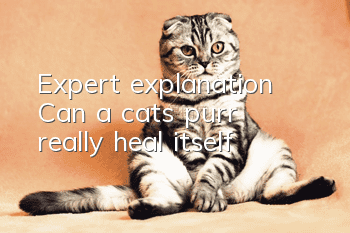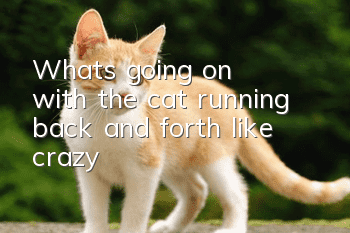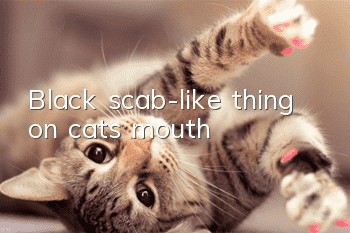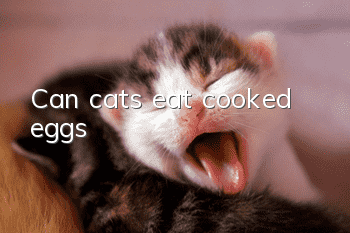Expert explanation | Can a cat’s purr really heal itself?

If you love cats, their purrs may be one of the most soothing sounds in the world. A purr seems to be the quintessence of contentment, yet it can also sound weird and bizarre. How on earth does a cat emit such perfect vibrating sounds for minutes on end? After decades of research, no one is quite sure why. But here are some things we can be sure of about purring.
Most of what we know about purring comes from observations, and most of the observations come from people who keep cats as pets. You probably know what this means: Our observers pet their kittens frequently, and generally succeed in eliciting a purr. Therefore, the most typical explanation for the "gurgling" sound is that it is a manifestation of happiness and satisfaction. However, cats purr for many other reasons as well.
Leslie Lyons, professor of veterinary medicine at the University of California, Davis, wrote:
"Felines also often purr when they are under stress, such as during a trip to the vet or recovering from an injury. So not all purrs are a sign of a cat's reaction to them. Feeling satisfied or happy with the current environment."
We don’t actually know why cats purr, but it seems clear that the sound serves multiple purposes. Paul Lehausen, a well-known animal behaviorist who has spent decades studying cats, said purring is a way for cats to communicate with each other and show that they mean no harm. A recent study found that cats make a special "purr" sound when they need people to feed them (of course they often purr during the feeding process as well).
"Wooing Cat" and "Roaring Cat"
What we know about purring is what it sounds like, and to some extent, how it works. Swedish linguist Robert Eklund was fascinated by the sounds animals, including humans, make when they breathe. These sounds are called "aspiratory sounds," and Eklund and his colleagues proposed the definition "gurgling.""Purring" is "a continuous sound product (usually lasting several minutes) due to changes in both the exhaust airflow and the inhalation airflow of the lungs." In other words, the sound that is considered a "purr" must be the sound between the cat's inhalation and inhalation. The sound made during exhalation.
Eklund has recorded numerous feline purrs and found that domestic cats purr at frequencies between 20.94 and 27.21 Hz when exhaling and between 23.0 and 26.09 Hz when inhaling. between. "Gurgling" sounds also produce stronger harmonies.
Eklund also recorded a cheetah purring, which gets louder when it exhales. Many big cats, such as lions and tigers, do not purr. This led early researchers to divide cats into "whining cats" and "yowling cats." The inability of purring cats to purr may be due to anatomical differences with domestic cats, cheetahs, and other purring cats (you can hear about various types of cats on Eklund's website, Purring.org animal's "purr" sound).
Frustratingly, no one knows exactly what structure enables cats to purr, and there is no "purring organ", nor is there anything in the cat's throat that is related to this inexplicable sound. A special structure corresponding to the sound of resistance. Some veterinary researchers believe that the "grunt" sound is produced by muscles in the larynx that stretch or contract the vocal cords. But no one can be sure.
The human larynx is viewed from the left front view. Its outer structure is similar to that of a feline larynx.
Viewed from the bottom up, the human vocal cords and the internal structure of the larynx are shown in the figure.
Therapeutic Hypothesis
Bioacoustic researcher Elisabeth von Mugenthaler suggested in Fauna Letters that cats may purr to self-medicate, she wrote:
"Frequencies between 20 and 140 Hz have beneficial effects on bone growth, fracture healing, pain relief, elimination of swelling, wound treatment, muscle growth and repair, tendon repair, joint mobility and relief of dyspnea. Animal ZoneDepartment Communications has documented the purrs of many cats, including cheetahs, pumas, servals, ocelots and house cats, both at a non-profit organization and at the Cincinnati Zoo. By analyzing this data, we found that feline purrs fall right into the anabolic frequency range that promotes bone growth. ”
Although this may explain the evolutionary significance of grunting, it is still just a hypothesis. Many researchers think this is plausible, but more research is needed to provide more solid evidence that feline bones indeed heal faster due to purring.
We know when cats purr and what it sounds like, but we still don’t know for sure why cats continue to purr and what structure allows them to make such a special sound. . Maybe even if we finally have an answer, cat owners won't want to know. After all, cats’ purrs have been known to us for centuries as the ultimate sound of comfort and joy. Finally, maybe the kitten purrs not because it is happy, but because it has to comfort itself by being petted for the fifty thousandth time by these restless people.
- Central stimulant drugs for cats, drug dosage and usage!
- What should I do if my cat is anorexic and won’t eat? What causes anorexia in cats
- Why do cats like to crawl under the bed?
- How to make kittens use cat litter? The method is actually very simple!
- What to do if a cat loses hair seriously? Raise it scientifically to reduce cat hair loss
- Why do cats poop outside?
- How to relieve cat’s nervousness? What preparations and precautions need to be made!
- How to train American shorthair cats? Training timing is important!
- What should you pay attention to before and after a cat is vaccinated? Things about cats being vaccinated!
- Can you spray alcohol on a kitten?



